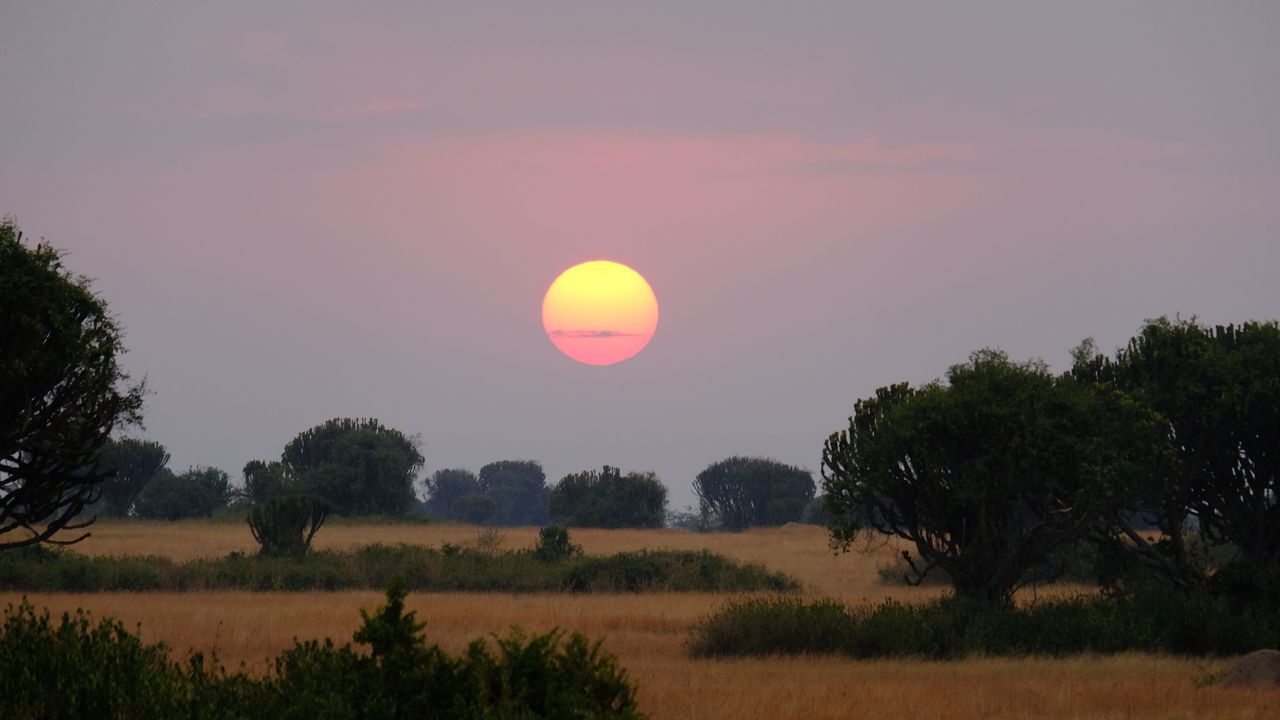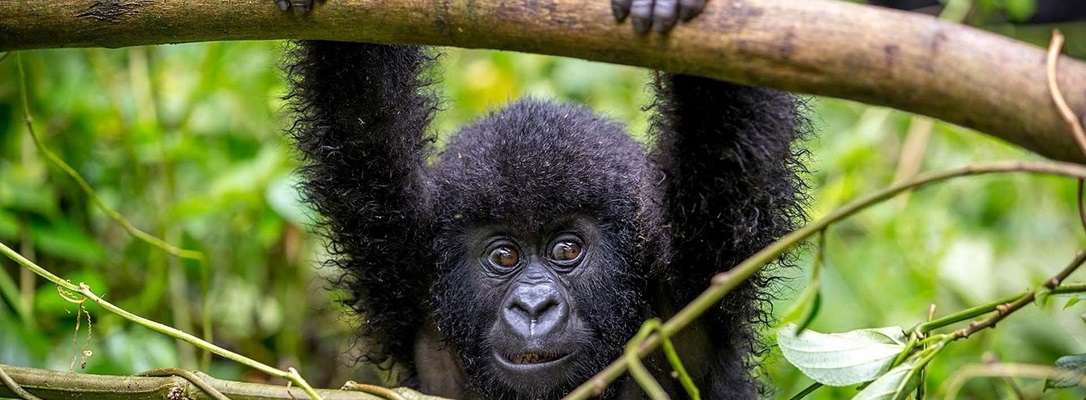Chimpanzee Trekking
Unlike the adrenaline rush of chasing predators on savannah safaris, chimpanzee trekking is a more personal, emotional experience. Imagine looking into the eyes of a creature that shares about 98% of your DNA — it feels like meeting a wild relative. Chimpanzees are the smartest and most social of all the great apes. They laugh, cry, hug, kiss, and even use tools to hunt or groom each other. Watching them interact is like peeking into a mirror of our own lives.
Sadly, chimpanzees are in danger. Over the last 50 years, their numbers have dropped from millions to fewer than 300,000. They now live only in parts of central and eastern Africa, facing constant threats from habitat loss, poaching, and disease.
Trekking to see them in the wild is a once-in-a-lifetime adventure — not just exciting, but deeply moving. You’ll walk through lush forests, guided by expert trackers, until you’re face to face with these incredible beings in their natural home. If you’re looking for one of Africa’s most unforgettable wildlife encounters, chimpanzee trekking is it.
What is chimpanzee trekking?
Chimpanzee trekking is a guided nature walk where you track and watch wild chimpanzees in their natural forest home. Like gorilla trekking, you’ll hike through the forest with an expert guide who helps you find a group of chimps and observe them as they eat, play, and interact.
This unforgettable experience is available in Uganda, Rwanda, and Tanzania. Once your guide finds a chimpanzee group, you’ll have one hour to quietly watch them up close. Group sizes are small — usually only six people aged 12 or older — and treks happen twice a day, in the morning and afternoon.
The full trek usually takes between two and six hours, including a short briefing before you start. To protect the chimpanzees, visitors must stay at least seven meters (23 feet) away. If you want to spend even more time with the chimps, you can try a special full-day experience called chimpanzee habituation, explained below.



Where To Go Chimp Trekking?
Wild chimpanzees live mostly in the thick forests of Central and West Africa. Unlike animals you might see on open savannah safaris, chimps live high in the treetops, so spotting them can take a bit of hiking — but that’s all part of the fun! Sometimes they appear quickly, other times you’ll need to walk a bit before finding them.
One of the very best places to see chimpanzees is Kibale National Park in Uganda. This beautiful forest is home to around 1,500 chimpanzees living in an area about 776 square kilometers. Four of their communities are used to humans and can be visited regularly — they’ve been welcoming visitors since 1993! Kibale is also full of other wildlife.
You might see baboons, red-tailed monkeys, colobus monkeys, antelope, elephants, and over 370 types of birds. The most popular chimp trek here is the Kanyanchu Primate Walk. It lasts about three hours, is open to visitors aged 16 and up, and runs three times a day — at 8 a.m., 11 a.m., and 2 p.m. Best of all, there’s more than a 95% chance you’ll see chimpanzees on your walk!
Chimpanzee Trekking in Uganda
Uganda is one of the best places in Africa to see wild chimpanzees, with around 5,000 living in its forests. It’s also one of the few countries where you can do both chimpanzee and gorilla trekking in a single trip — a dream for many wildlife lovers! Besides Kibale National Park, you can go chimp trekking in several other amazing spots:
- Budongo Forest (in Murchison Falls National Park) offers a quieter experience, with only 16 permits available each day for two small groups of 8 people (ages 12+).
- Kalinzu Forest Reserve, near Queen Elizabeth National Park, is home to over 300 wild chimpanzees and is another great option for spotting them in the wild.
- Kyambura Gorge, also in Queen Elizabeth National Park, is a beautiful, tree-filled canyon with a small, habituated group of chimps living there. The steep slopes and lush forest make this one of the most dramatic trekking locations.
Chimpanzee Trekking in Rwanda
Rwanda is another great destination for primate lovers. You can go gorilla trekking in Volcanoes National Park and chimpanzee trekking in Nyungwe Forest National Park— all in one trip! Nyungwe is a beautiful mountain forest, home to about 500 lively chimpanzees swinging through the thick tree canopy.
Two of the chimp groups are used to humans and can be visited on guided treks. Each group of trekkers includes up to eight people (ages 12 and older), along with a guide.
Chimp treks start at sunrise, and only one group of visitors is allowed to see each chimp troop per day. Once found, you’ll get to spend one unforgettable hour with them — while staying at least seven meters (23 feet) away. The hike isn’t too difficult, but keep in mind that the forest is at a high altitude (up to 9,600 feet), which may take some getting used to.
Chimp Trekking in Tanzania
In Tanzania, there are just two special places where you can go chimpanzee trekking. One is Gombe National Park, made famous by chimpanzee expert Jane Goodall. This small, peaceful park sits along the shores of Lake Tanganyika and can only be reached by boat. It’s just 13 square miles, with forest-covered hills and valleys home to about 95 chimpanzees.
Further south along the same lake is Mahale Mountains National Park, also only accessible by boat and with no roads at all. Trekking here is more challenging due to steep trails and thick forest, but it’s incredibly rewarding. The park is home to around 800 chimpanzees, and about 60 chimps from the “M” group are used to seeing people.
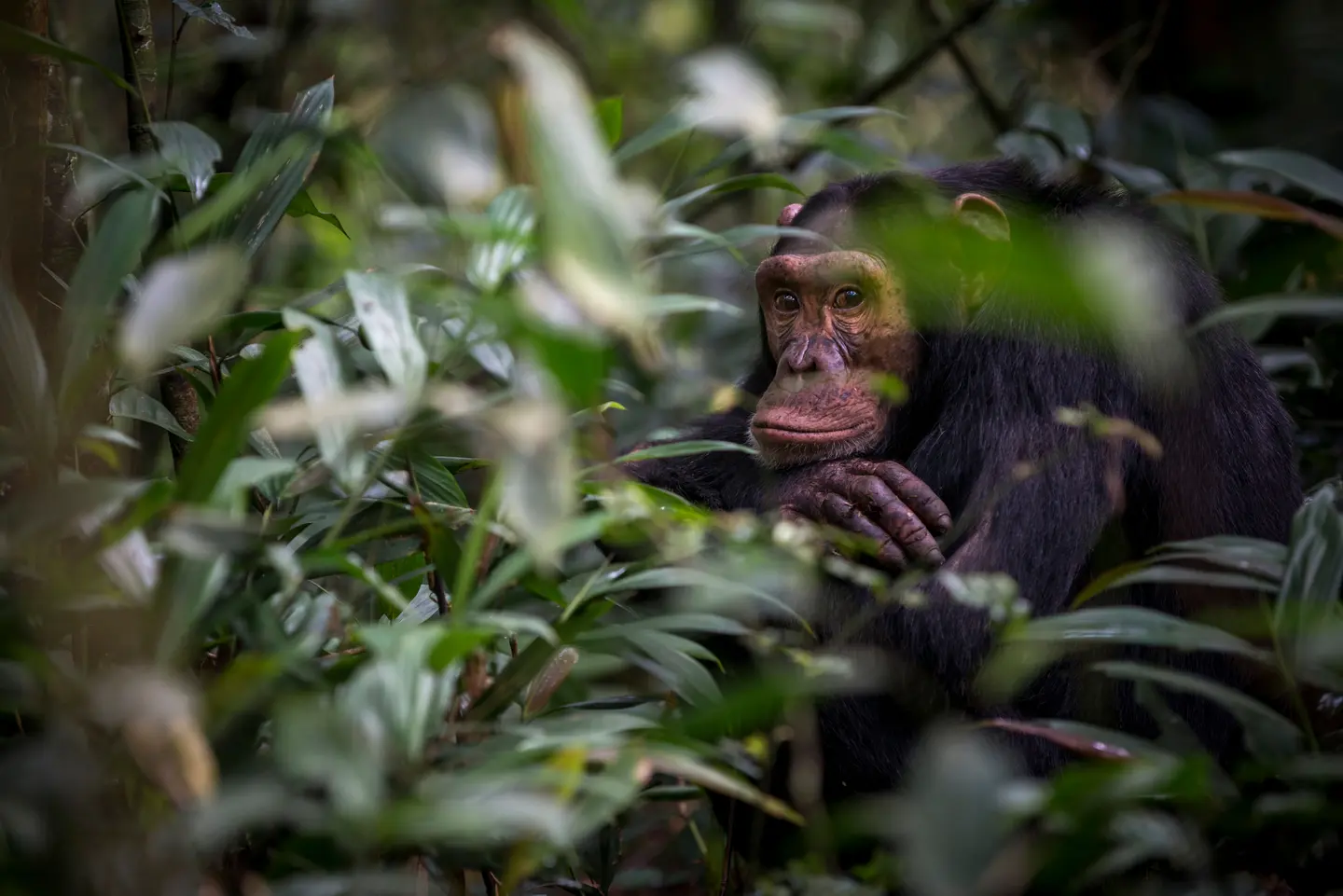
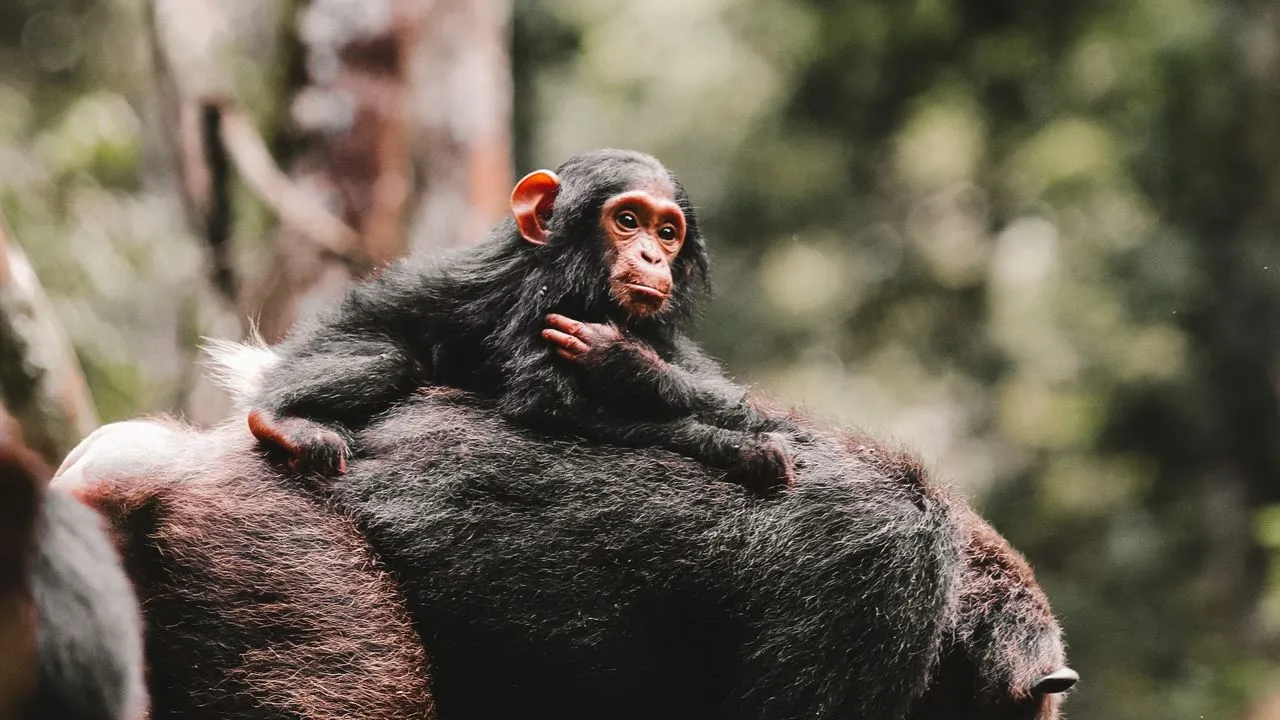
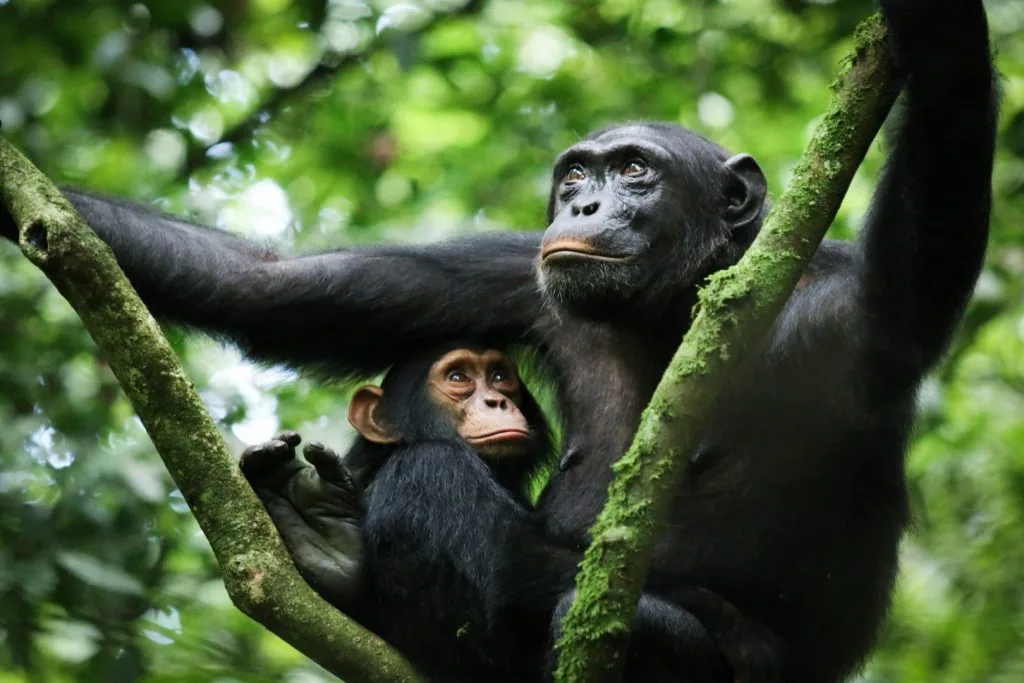
Primate and Safari
With a little planning, your chimpanzee trekking tour can become so much more than a single wildlife experience. Uganda is a large and diverse country, home to many incredible national parks. With just a few short travels between locations, you can go from tracking chimps in the forest to spotting lions and elephants on the open savannah.
Want even more primate magic? Add gorilla trekking to your itinerary! It’s the perfect way to turn your trip into a full primate adventure — both experiences are thrilling, unforgettable, and deeply rewarding. Ready to start planning? Contact our safari expert who can help design a custom trip just for you. Let’s bring your dream safari to life!
The best time to go chimpanzee trekking
Chimpanzee trekking is available in Uganda, Rwanda, and Tanzania, and the best time to go depends on where you’re heading. In general, the dry seasons are the most ideal. The forest trails are easier to hike, there’s less mud, and the views are clearer—great for spotting chimps and taking photos.
In Uganda, the best months to visit are June to September and December to February. During these times, the weather is drier, the vegetation is thinner, and chimpanzees are easier to see. The rainy seasons—March to May and October to November—are still good for trekking, but the chimps can be harder to find.
On the bright side, there are usually fewer tourists and lower prices during this time. Rwanda follows a similar pattern, with the dry months being the best for chimpanzee trekking. So, whether you’re chasing clearer trails or quieter forests, there’s a season to match your style!
How fit do you need to be to go chimp trekking?
Chimpanzee trekking is an exciting adventure, but it can also be physically challenging. You’ll be walking through thick vegetation, sometimes muddy terrain, and the trek can last anywhere from one to five hours—depending on where the chimps are that day. You don’t need to be super fit or an athlete, but having a moderate level of fitness will definitely help you enjoy the experience more.
Good balance, stamina, and flexibility will make it easier to handle the uneven forest paths. If you’re worried about keeping up, don’t stress. Your guide is there to help and support you along the way, and you can always talk to them if you need a break or assistance. Being in good health and ready for a bit of a workout will go a long way toward making your trek fun and memorable!
What to Pack for a Chimpanzee Trekking Safari?
To make the most of your chimp trekking adventure, it’s important to come prepared. Here’s a simple list of what to bring:
- A small backpack to carry your essentials
- Snacks and plenty of water to stay energized and hydrated
- A camera (make sure the flash is turned off) to capture the moment
- Sturdy, lightweight hiking boots with good grip — trails can be muddy and slippery
- A light, waterproof jacket that also allows airflow
- Layered clothing to adjust to changing temperatures, especially when hiking uphill
- Long-sleeved shirts and long pants to protect against thorns and bushes
- Insect repellent to keep the bugs away
- Gaiters (or just tuck your pants into your boots) to keep safari ants out
- Gardening gloves can help protect your hands from stinging plants
Chimpanzee Trekking Rules and Regulations
To protect both you and the chimpanzees, there are important rules to follow during your trek. Chimps are closely related to humans and can catch many of the same illnesses, so if you’re feeling unwell—with a cold or infection—you won’t be allowed to join the trek. The goal is to quietly observe the chimps without disturbing them or their natural environment. Here are the key rules to keep in mind:
- No flash photography
- Stay at least 7–8 meters (about 23–26 feet) away from the chimpanzees
- Don’t try to get their attention or provoke them in any way
- Keep voices low and avoid loud noise
- No eating or drinking while near the chimps
- Visits are limited to one hour once the chimps are found
- Group sizes are kept small, with a maximum of eight people
- Always follow your guide’s instructions
Chimpanzee Trekking vs Gorilla Trekking
Gorilla and chimpanzee trekking are both unforgettable experiences, but there are a few key differences. Both involve small groups and each trek gives you one hour with the animals once found.
For gorilla trekking, expert trackers usually go ahead of the group and guide you directly to where the gorillas are using radios. This makes it easier to locate them. In chimpanzee trekking, you and your guide need to track the chimps during the walk, which can make the hike more challenging and the success rate a bit lower.
Once located, gorillas tend to stay in one area, which makes it easier to watch and photograph them. Chimps are more active and often move quickly through the trees, so you may need to follow them around. In some locations, chimps are well used to humans, but in others, they may be more shy—especially females and babies.
Overall, both treks offer rich and exciting encounters. Chimpanzee trekking can be more unpredictable, but also more energetic. Gorilla trekking feels calmer and incredibly powerful—being face-to-face with such a massive animal is truly awe-inspiring.
Chimp trekking Vs a chimpanzee habituation experience
Besides regular chimpanzee trekking, some parks—like Kibale National Park in Uganda—offer a more in-depth adventure called a chimpanzee habituation experience. In a normal trek, you spend one hour with chimps that are already used to people. But in a habituation experience, you join experts in the process of helping wild chimpanzees get comfortable around humans—a process that can take up to 10 years.
The big advantage? You get to spend a whole or half day with a chimp group instead of just an hour. This gives you time to learn the personalities of different chimps, observe their daily habits, and understand how they interact with each other. You’ll also pick up fieldwork skills and learn how researchers study chimp behavior.
In Kibale, you’ll be guided by experienced rangers and local guides who know the chimps well and can tell you their history and how the group has changed over time. Overall, a chimpanzee habituation experience is more immersive and educational than a regular trek—perfect for those who want a deeper, hands-on wildlife experience.
Checkout These Itineraries
Chimp Trekking FAQs
Is chimpanzee trekking safe?
Yes, chimpanzee trekking is generally very safe. While it’s true that chimps are wild animals, the ones you’ll visit live in groups that have been habituated—meaning they’re used to seeing people. Chimps that aren’t used to humans usually just run away when they see people.
To stay safe, it’s important to follow your guide’s instructions. Always keep a safe distance, don’t eat, drink, or smoke around the chimps, and never use flash on your camera. Speak quietly and move slowly to avoid upsetting them. An armed ranger joins every trek, just in case, and can fire a warning shot if needed—but this is extremely rare.
In fact, the biggest safety concerns aren’t the chimps—it’s things like muddy trails, stinging plants, or slippery slopes. With the right shoes and careful steps, you’ll be just fine.
Are chimps friendly to humans?
Many people think of chimpanzees as friendly animals, thanks to how often we see them on TV, in movies, or with celebrity owners. Even famous primatologist Jane Goodall was seen sharing gentle moments with chimps during her research. But when it comes to chimpanzee trekking, it’s important to remember that chimps are still wild animals—even if they’ve been habituated to seeing humans.
While they may recognize and act familiar around the guides and rangers they see often, they usually ignore visitors and go about their day naturally. That’s exactly how it should be. The goal is to quietly observe chimps in their natural environment without disturbing them. So while they might seem calm or even curious at times, they aren’t pets or performers—they’re intelligent, powerful animals just living their lives in the wild.
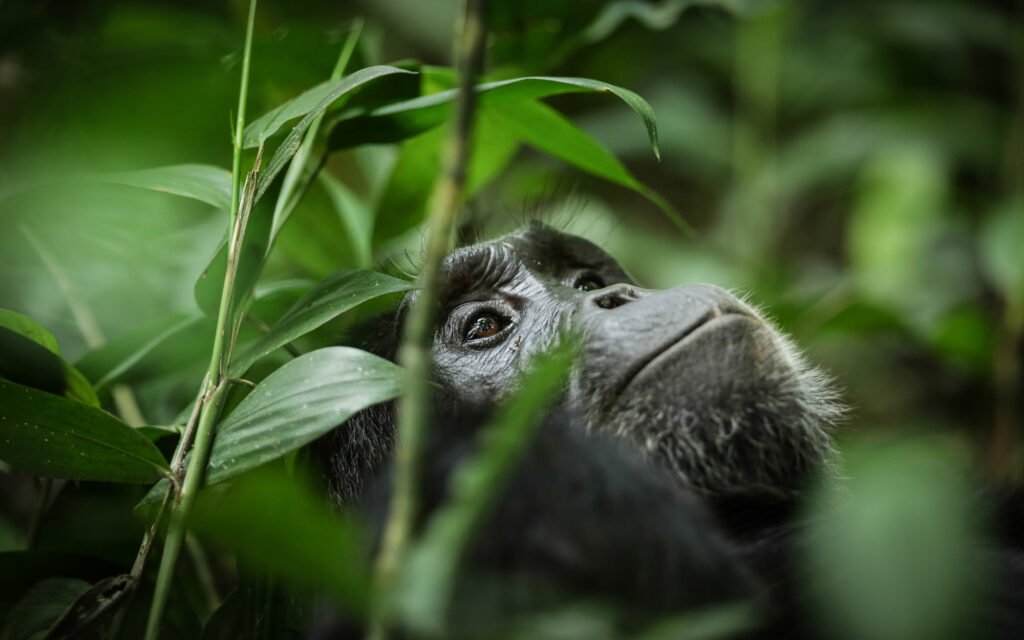
Guided by a genuine passion to share Uganda's Wonders with you.
About Us
Our warmth and extensive safari knowledge allow us to offer authentic, immersive, and remarkable experiences that leave a positive impact on Africa’s crucial wilderness areas.

